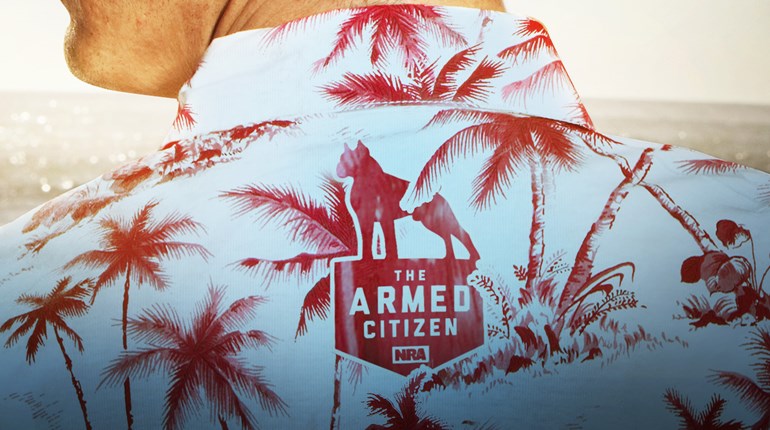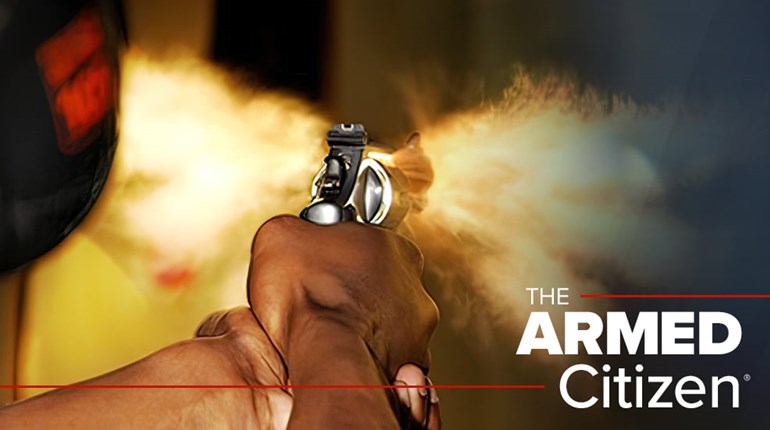
Just when we think our pal Darren LaSorte is gonna be all right after all, we read something like this.
It’s Darren’s Monday NRA SHARP column deriding—his words here—the “Appendix Carry Craze.” In this annoyingly well-written screed, he also recommends a 28th Amendment to the U.S. Constitution to ban the practice, confiscation of all assets and tooling of appendix carry accouterment manufacturers, and, for anyone who’s ever recommended or carried appendix more than once, the forcible tattooing of the forehead to read “I was an appendix carry ninny.” In purple ink.
Okay, okay: We made up the part about the purple ink.
But it’s certain that Darren detests the practice. And the problem with bucking Darren, is, ah, well, have you seen the guy shoot? Fair to say he knows a thing or two.
Appendix carry, though, is one of those cases where describing pro- and opponents as avid is an archetype of understatement. And Darren’s experience isn’t all that uncommon. Particularly for those accustomed to another method, the allures of appendix carry are difficult to, shall we say, apprehend?
We’ll take it a step at a time, then.
Comfort: Hip/4 o’clock/kidney carry styles are angular variations on the same theme—strong side, belt mount (usually) and either inside or outside of the waistband. Often they’re achieved using cantable versions of the same holsters, and we concede all can be more comfortable than appendix carry. This breaks down to an extent if you try to overcarry, by which we mean carry too much gun. If you’re disappointed with the comfort of a 1911 in this mode, for instance, it’s because the configuration is a solid three lbs. (loaded, with the holster). It was never intended for carry on a normal belt on a pair of normal pants/trousers/slacks. It is going to drag down just about anything short of suspenders or braces, and 30 to 50 times a day, too. Get used to hitching ’em up!
Just embrace that whole it-sucks-while-you’re-sitting thing, too; they’re both problematic. You’re often just too wide. If you’re a sloucher, you’ll gain some relief until you try to rise from a folding metal chair. The butt of your pistol slamming into tubular steel—now rendered a bell—will tell folks in neighboring zip codes who not to pick a fight with, and how you carry. Darren’s kind of fit/trim (you’re welcome, buddy) will also let you call hip/4 o’clock/kidney comfortable in a vehicle, too. You’ll only be lying, say, 68.678 percent? No trouble with the seatbelt either. Bwahahahahaha.
Oddly, with one type of holster we like (Remora, see inset) and an appropriate firearm (up to say a G42-43/M&P Shield or a G26, in a pinch), appendix can be better than expected on the comfort scale. You do have to be conscious of getting up and down or you will eventually dump that gat. In the car, it’s an easy remove-and-replace.
All kidding aside: The side-to-rear belt methods are more secure and generally more comfortable walking and standing, but appendix can be adjusted more, which tips the balance on occasion.
Discretion: If you’re the right body shape, hip/4 o’clock/kidney can be quite discreet, but—confession time—it’s an actual game in our family to point and giggle at CCW holders who think they’ve hidden their firearms in these modes. Hip carry is essentially a tumor, and as you move the pistol to the back, thinness will become paramount (recall this was the whole reason for “bobtailed” mainspring housings on 1911s). The double-stacks especially, even little ones, look like congenital deformities aft of 4 o’clock. Point? These carry positions demand either relatively heavy garments that don’t “drape” your pistol, or troublesomely loose ones (see furling, below). Depending on climate or other context, this is a giveaway, trading one sort of problem for another. .And do we even have to mention the bend-over, ride-up, screaming/pointing 5-year-old scenario? Thought not.
And do we even have to mention the bend-over, ride-up, screaming/pointing 5-year-old scenario? Thought not.
In other words, appendix wins here. Even the too-convex of us have a natural concavity in the hollow of the hip and waist, and it’ll eat up a surprising amount of firearm. The real problem is holsters, and we think this is what gives rise to comfort complaints, and also where room for innovation remains. We learned the technique from an instructor who carried vertically with a skin-guard holster, and the pistol—a G17—just disappeared. And we knew that he, as a Southwesterner, wasn’t always wearing that sweatshirt, either.
Here we think it is appendix carry that goes long: The variety of cover garments corresponds to roughly 70 percent of our existing wardrobe, season notwithstanding. Especially with a square-tailed shirt, you won’t even look like a slob. Multiple layers can be accommodated as well.
Whichever way you go here, remember that in many locales, it’s a violation of “concealed” to allow a firearm to print (to show in outline) through the covering garment no matter how you carry. Know those local rules.
Carry Reality: First is clearance of the cover garment if and when you must draw. Strong-side, hip/4 o’clock/kidney carry depends on one hand to do both clearing and drawing and is purely sequential. It can be fast if practiced, but rarely as fast as the not-sequentially-locked appendix carry (weak hand clears the garment and retains control, strong hand draws the pistol).
Note too, that in even a slight breeze, a light cover garment coupled with single-handed clearance and draw can become a disaster, up to and including negligent discharge or dropping of the firearm. Such “furling,” to put it mildly, is a rude shock. This is no made-up problem, either: We know a lot of gents who train in jacket-gauge garments and even put weights in pockets to keep garments moving out of the way, only to actually carry in a long-tailed, summer-weight shirt. We quote a sailor, therefore¬—Captain Hook: “A dangerous business, that.”
The same criticism cannot be leveled against appendix carry, where positive cover garment control is possible in either one- or two-handed execution, and independent of garment weight or multiple layers.
Closing The Loop: Darren’s assertion that your draw can be more easily fouled from the front if you use appendix carry remains correct. We think, though, that a lot of assumptions parameterize that conclusion.
As for the actual fouling attempt (the assailant holds the pistol down in your holster while striking with the free arm), the defense is the same—a quick turn to the strong side. It’s useful to observe that as you turn in appendix carry, you won’t be turning the pistol as far out of the fight, nor, if drawing, have to clear your own torso to bear. It’s only fair to note that draw time will increase, as the weak hand may be employed defensively—a deficiency not shared by side/rear holster positions.
Our riposte, then, is as follows: First, even Darren concurs you have a less-detectable carry mode, especially at close quarters—how does your assailant know what and where to foul? Second, you have a faster draw if you decide you must employ it. Third, if it’s an attempt on your weapon, you are far more likely to see the genesis of the attempt as it can only be made from the front. (If someone targets your pistol for acquisition when carried in a side/rear mode, the attempt may very well begin without any knowledge or defense on your part.)
We’d also posit an underappreciated—and in our experience, untaught—benefit of appendix carry: “staging” of the draw. Unlike side/rear carry, it can be done without exposing the firearm (no “brandishing” issue). It can be done without telltale, large-amplitude arm movements (with care, nothing above the elbows moves). Best of all, it dramatically speeds the draw if finally necessary, but can be very discreetly de-escalated too—always a happy circumstance.
We’ve had some fun rebutting Darren’s critique of appendix carry, but don’t lose sight of the bigger picture—any method of concealed carry is deeply serious business. Two factors are paramount. Legality—often within a thicket of confusingly varied ordinances—must be scrupulously observed. Safety is just as crucial: CCW implies proximity to others, and any breach therefore becomes much more dangerous. As with every other aspect of the Carry Life, responsible choices and continuous practice are key.
Now Carry on. Even Darren.


































